Author: Steve Thanos
Of the myriad off-flavors that can be present in beer, there’s one that nearly everyone, from regular Miller Lite drinkers to full-blown aficionados, have likely had some experience with– skunky. Often referred to as “lightstruck,” the skunk character develops when beer is exposed to sunlight, during which compounds in hops react with riboflavin to create 3-methyl-2-butene-1-thiol, or MBT. With a sensory threshold of around 5 ng/L, it doesn’t take much to be perceptible, and MBT can form in as little as a few seconds.
While some breweries continues to package their beer in clear or green glass bottles, the most common bottle color is amber, which is more effective at blocking UV-B from sunlight and thus reducing the risk of developing a lightstruck off-flavor. Still, most agree that even when beer is stored in amber bottles, the best practice is to avoid exposing it to sunlight.
As someone who bottled the beer I brew for years before moving to kegging, I was well aware of the problems that could occur with sunlight exposure and made every effort to keep my bottled beer stored in a dark places. I also drink a lot of beer out of amber bottles, often times in sunny places, and having not detected noticeable issues, I began to wonder how effective these bottles are at reducing skunking and designed an xBmt to test it out.
| PURPOSE |
To evaluate the differences between an American Blonde Ale packaged in an amber bottle that’s placed in direct sunlight for 30 minutes and one that is not exposed to sunlight.
| METHODS |
Wanting to ensure any impact of the variable was easily perceivable, I went with a simple Blonde Ale recipe for this xBmt.
Between The Seats
Recipe Details
| Batch Size | Boil Time | IBU | SRM | Est. OG | Est. FG | ABV |
|---|---|---|---|---|---|---|
| 5.5 gal | 60 min | 28.9 | 3.5 SRM | 1.05 | 1.006 | 5.78 % |
| Actuals | 1.05 | 1.006 | 5.78 % | |||
Fermentables
| Name | Amount | % |
|---|---|---|
| Pilsner | 9 lbs | 89.99 |
| Carapils | 1.001 lbs | 10.01 |
Hops
| Name | Amount | Time | Use | Form | Alpha % |
|---|---|---|---|---|---|
| Amarillo | 20 g | 60 min | Boil | Pellet | 6.4 |
| Amarillo | 24 g | 15 min | Boil | Pellet | 6.4 |
| Amarillo | 24 g | 5 min | Boil | Pellet | 6.4 |
Yeast
| Name | Lab | Attenuation | Temperature |
|---|---|---|---|
| Flagship (A07) | Imperial Yeast | 77% | 60.1°F - 72°F |
Notes
| Water Profile: Ca 36 | Mg 12 | Na 9 | SO4 27 | Cl 17 |
Download
| Download this recipe's BeerXML file |
After collecting the water and adjusting it to my desire profile, I lit the flame to get it heating up before weighing out and milling the grains.
Once the water was adequately heated, I incorporated the grains then checked to make sure the mash was at my target mash temperature.
Once the 60 minute mash rest was complete, I removed the grains then boiled the wort for 60 minutes before chilling it and taking a hydrometer measurement.
The filled carboy was placed in my chamber and left to finish chilling to my desired fermentation temperature of 66°F/19°C for a few hours before I pitched a pouch of Imperial Yeast A07 Flagship.
With signs of fermentation activity absent after 3 weeks, I took hydrometer measurement showing FG had been reached.
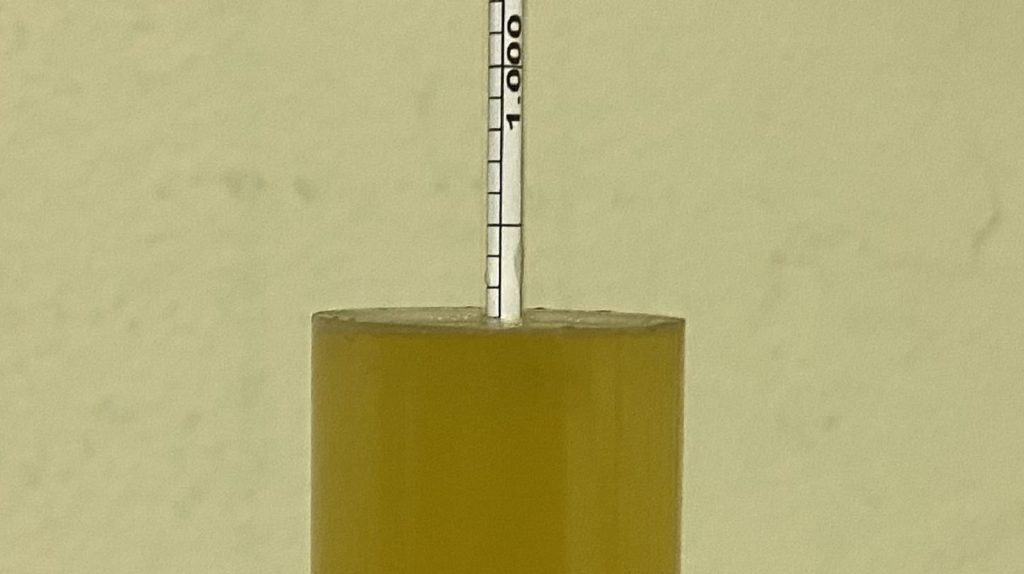
I then pressure transferred the beer into a keg and placed it in my keezer where it was left to condition for 3 weeks before I proceeded with bottling. At this point, I marked each bottle to ensure they didn’t get mixed up then placed one set in direct sunlight on my porch, while the others were immediately placed in my refrigerator.
After the bottled beers were exposed to sunlight for 30 minutes, I moved them next to the other bottles in the refrigerator. The beers were then left alone for 2 weeks before they were served to tasters for evaluation.
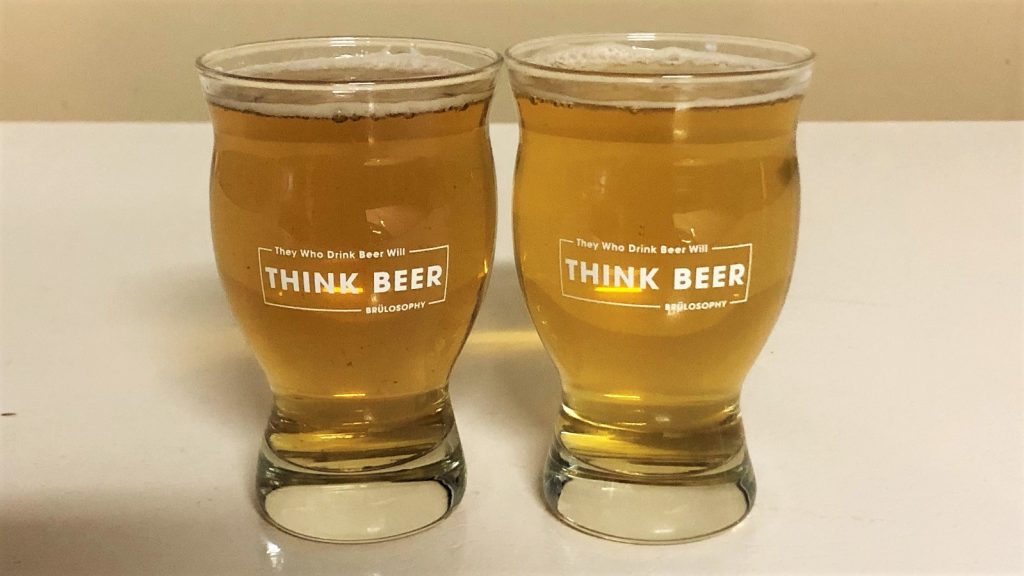
| RESULTS |
A total of 22 people of varying levels of experience participated in this xBmt. Each participant was served 1 sample of the beer exposed to direct sunlight in an amber bottle and 2 samples of the beer kept in the dark in different colored opaque cups then asked to identify the unique sample. While 12 tasters (p<0.05) would have had to accurately identify the unique sample in order to reach statistical significance, only 5 did (p=0.90), indicating participants in this xBmt were unable to reliably distinguish an American Blonde Ale that was packaged in an amber glass bottle and exposed to direct sunlight for 30 minutes from one packaged in the same vessel but not exposed to sunlight.
My Impressions: Out of the 5 semi-blind triangle tests I attempted, I correctly identified the odd-beer-out just once, which confirms my perception of these beers as being identical in every way. Neither had the tell-tale signs of MBT, which I’ve easily detected in other beers packaged in clear containers that were exposed to sunlight. I enjoyed drinking both of these beers quite a bit!
| DISCUSSION |
When beer is exposed to sunlight, or more specifically UV-B, isohumulones from hops react with riboflavin produced by yeast to create a chemical compound commonly referred to as MBT, which even in very small amounts, causes the lightstuck off-flavor colloquially known as “skunky.” While amber bottles allow less UV-B to pass through than lighter/clearer alternatives, brewers still tend to avoid exposing beer stored in such vessels to sunlight. Interestingly, tasters in this xBmt were unable to reliably distinguish an American Blonde Ale that was packaged in an amber glass bottle and exposed to direct sunlight for 30 minutes from one packaged in the same vessel but not exposed to sunlight.
Given how unpleasant lightstruck character is, it makes sense that brewers and drinkers would avoid exposing their beer to sunlight, regardless of the container it’s in. The most plausible explanation for these results is the simplest– amber glass, a material that effectively blocks light wavelengths under 450 nanometers (nm), doesn’t allow UV-B to pass through, as it has a wavelength range of 280 to 315 nm.
Going into this xBmt, I was confident 30 minutes of exposure to direct sunlight would lead to a perceptible difference between these beers, but I was proven wrong by the blind taster data as well as my own evaluation. While this led to me doing some research that admittedly increased my confidence in amber bottles as a skunk inhibitor, I’ll continue to store my bottled beer out of direct sunlight, but I won’t worry as much when enjoying one in the backyard on a sunny day. In the future, I plan to explore the impact exposure to sunlight has on beers stored in bottles of other colors that aren’t as effective at blocking UV-B.
If you have any thoughts about this xBmt, please do not hesitate to share in the comments section below!
Support Brülosophy In Style!
All designs are available in various colors and sizes on Amazon!
Follow Brülosophy on:
FACEBOOK | TWITTER | INSTAGRAM
If you enjoy this stuff and feel compelled to support Brulosophy.com, please check out the Support page for details on how you can very easily do so. Thanks!


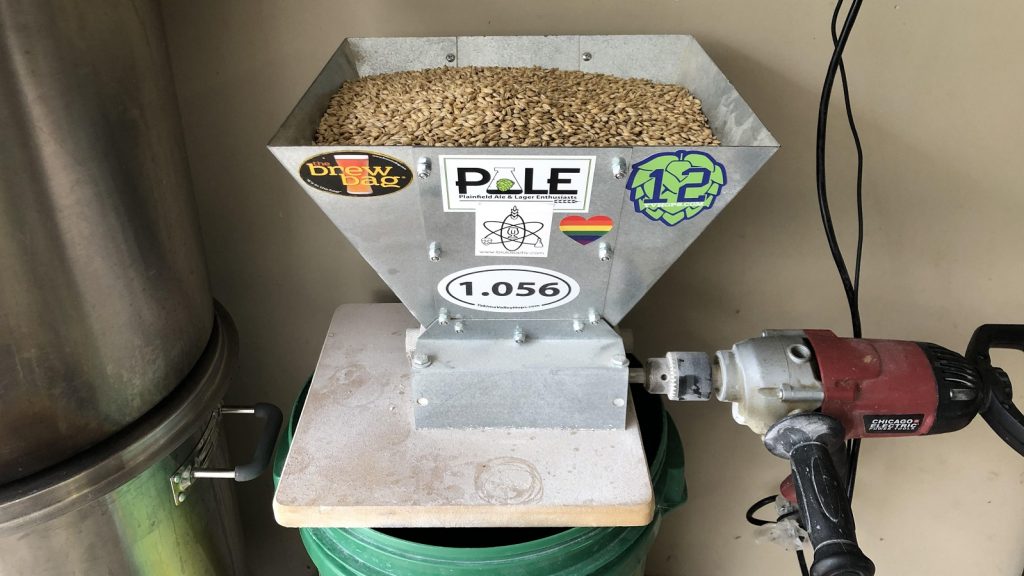
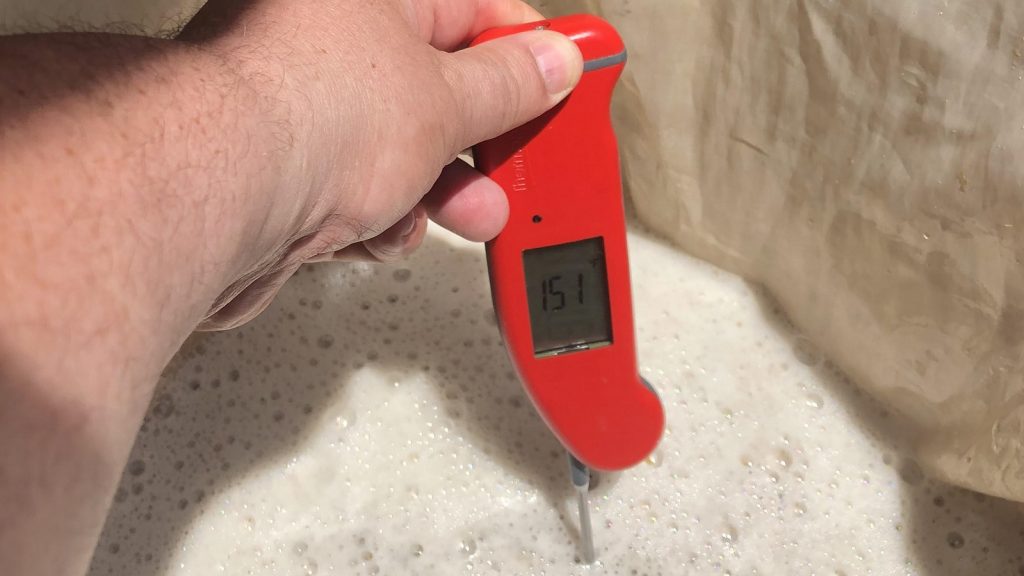
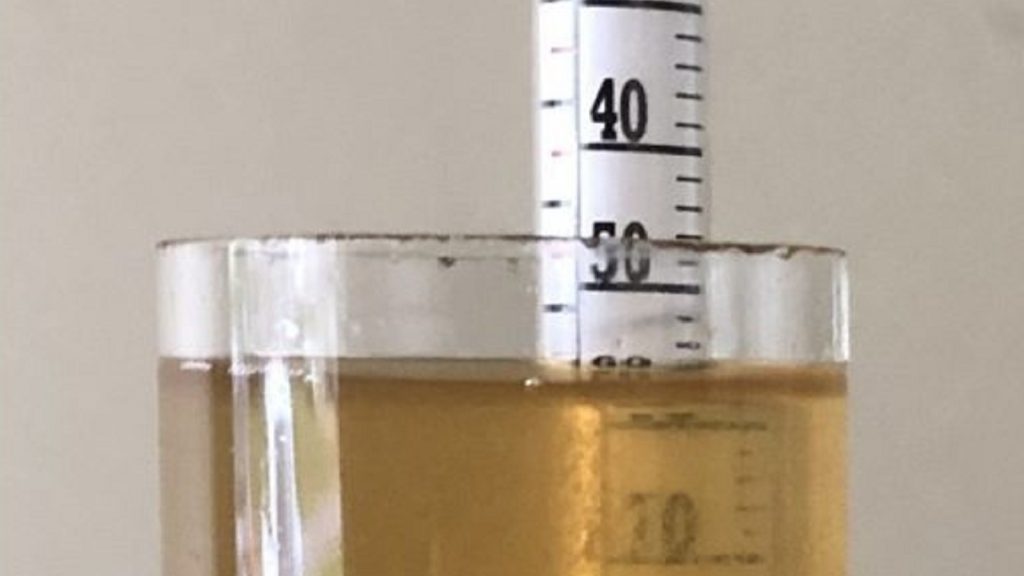
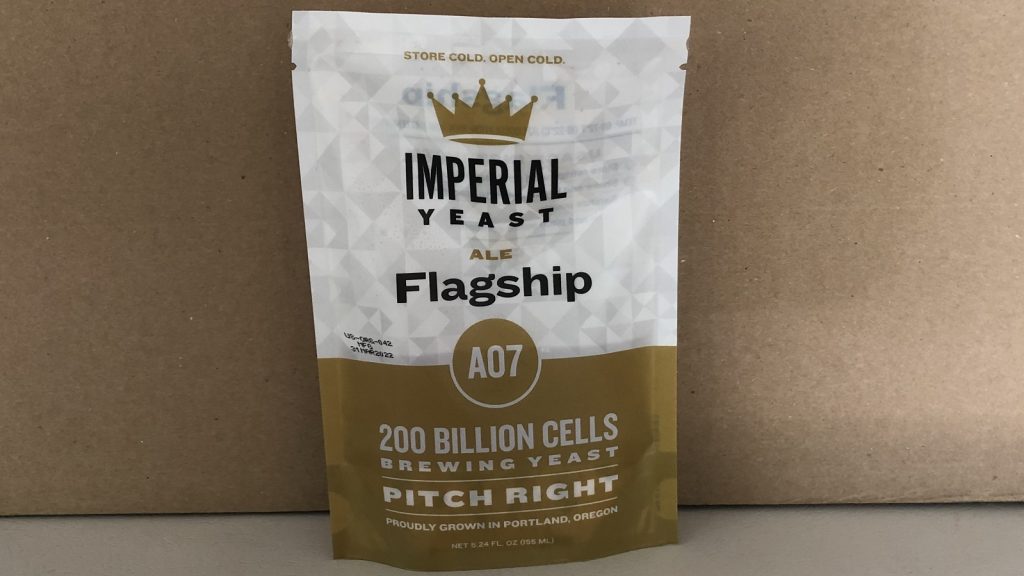
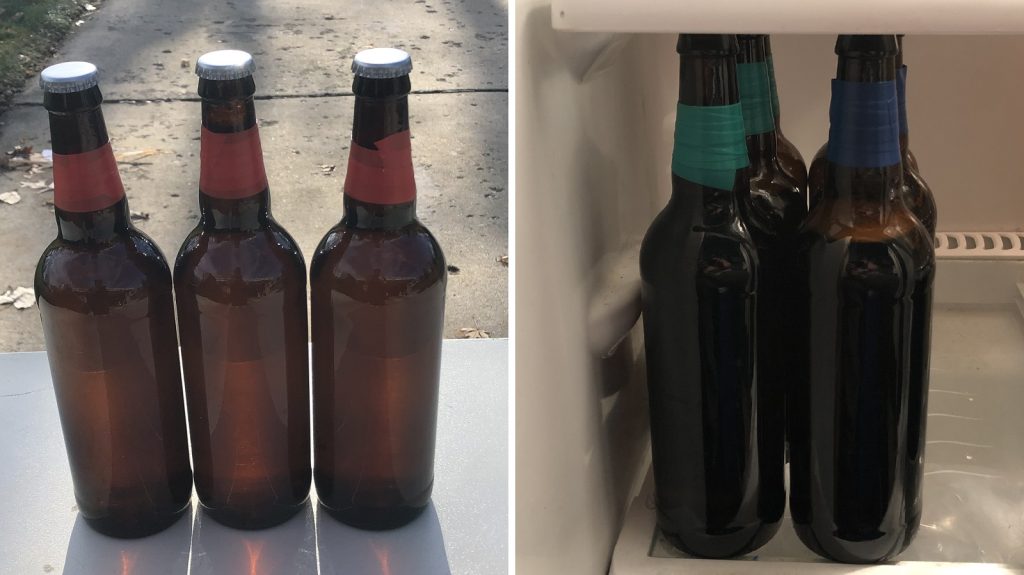











14 thoughts on “exBEERiment | Impact Sunlight Exposure In Amber Bottles Has On An American Blonde Ale”
From my experience it takes days in sunlight to destroy a beer. But then it tastes cat piss.
The chemical reaction only takes a few minutes.
A few seconds in my personal/anecdotal experience. We’ve more xBmts on this planned.
In clear glass, yes it takes less than 2 minutes. Green is somewhere in the middle, and amber apparently is quite good at stopping sunlight.
In the photo with the 2 glasses, the LHS Exposed to sun one looks darker. Did it actually look darker to the eye?
It’s the poor lighting in my garage.
Looking at the two glasses in the picture, I honestly knew there was a difference in the coloration, before I even looked at the caption. Did that equate to flavor? Don’t know. I think 30 minutes is not nearly enough time to be able to have a flavor differential. I was expecting at least 4 hours, if not more.
Copy-paste error?
“Once the 60 minute mash rest was complete, I removed the grains then boiled the wort for 60 minutes before chilling it and taking a refractometer reading showing the chit malt wort was 0.005 SG points lower than its Carapils counterpart.”
Would have liked to see a control done with a clear glass bottle exposed to sunlight, at least to be validated by you.
or just put it in a glass for 30 mnutes outside.
Brewing a batch was not needed for this xbment. Any off-the-shelf beer in amber bottles would have sufficed. Although to be fair, it’s an excuse to brew. I get that 😉
Two side notes: 1) try this experiment by pouring beer into typical, clear glassware, and the lightstruck flavor is hugely noticeable even after just a couple of minutes of sunlight exposure; 2) of the breweries that continue to package in clear/green bottles, some use a modified, light-stable hop product that is “immune” to UV light and does not react in sunlight to create skunkiness.
Nice data point! Not conclusive for all styles in all cases, but you already knew that.
I’m awfully curious what kind of data Corona has collected over the years. They must have evidence they’re not sharing. I wouldn’t be surprised if a lot of people actually expect the flavor by now.
While it’s difficult to conduct a tasting with a multitude of different samples for a group of people, you could still conduct something like this with yourself as a side note:
Multiple glass types; clear, green, amber, plastic (heavens above!)
A range of exposure times; 5 mins, 30 mins, 1 hour, 1 day
Already at 16 different samples … though you can probably discount the amber 5min and 30min, though I’d include it for repeatability purposes.
Different beer types: eek, what to choose…given its the reaction of hops, I would go for something that was heavily dry hopped vs something that wasn’t dry hopped, probably this same recipe.
Sorry meant to add before posting: Keep up the good work, I find the Bxmts done here help with my thinking and design in a craft brewery setting.